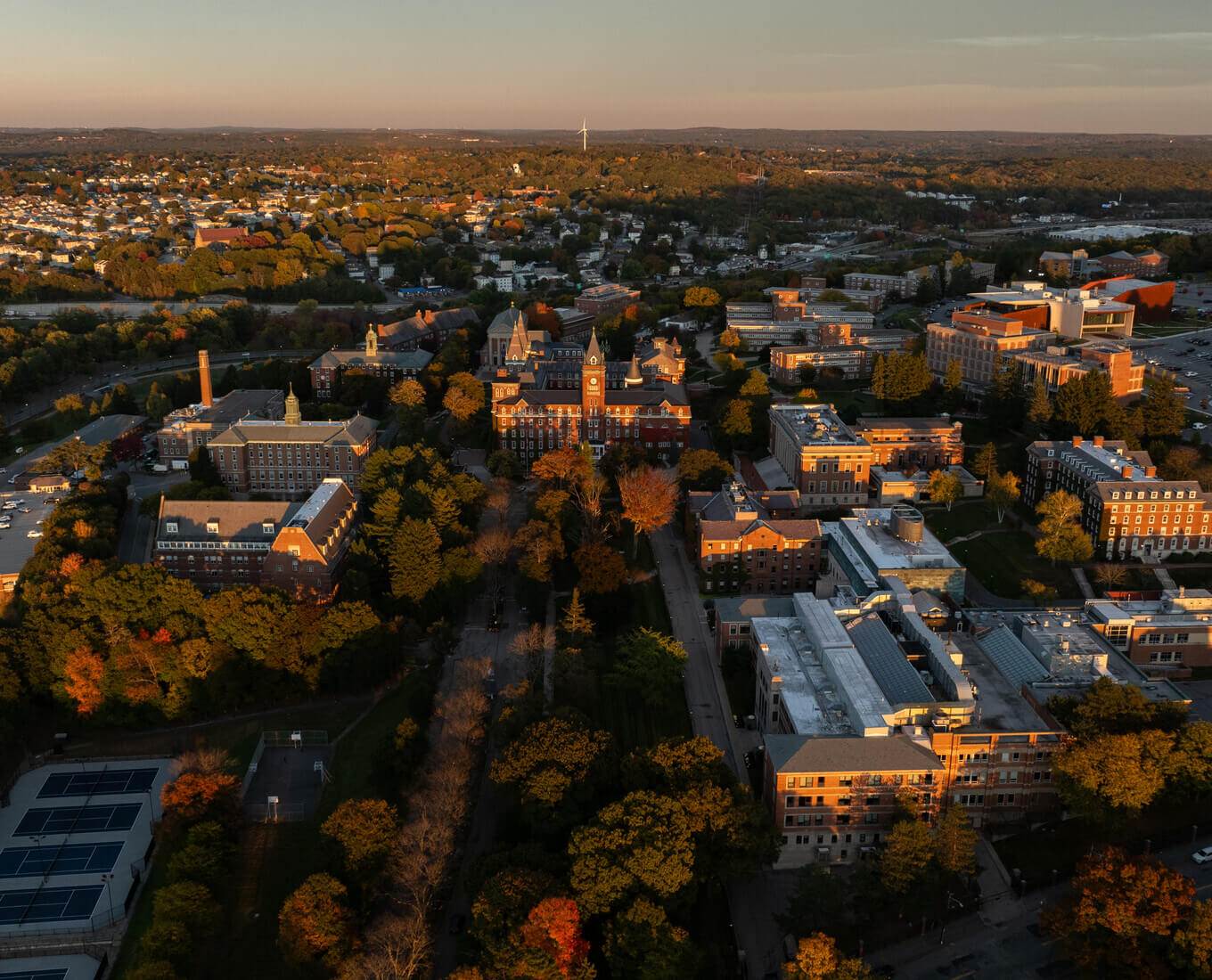WORCESTER, Mass. – The Iris & B. Gerald Cantor Art Gallery at the College of the Holy Cross will present The Art of Ebrû: Turkish Paper Marbling with Islamic Calligraphy by Feridun Özgören and Güliz Pamukoglu from Nov. 21 to Jan. 25.
Three gallery events in conjunction with the exhibit will be held at the Cantor Art Gallery:
* Nov. 28, 4:30 - 5:30 p.m. Gallery talk titled "The Art of Ebrû by Feridun Özgören"
* Nov. 28, 5:30 - 6:30 p.m. Reception
* Dec. 8, 3 - 4 p.m. Adam Gaiser, visiting assistant professor in the religious studies department, will give a talk titled "The Word Made Visible: Islamic Motifs in the Art of Ebru"
Feridun Özgören and Güliz Pamukoglu apply traditional Turkish ebrû (paper marbling) to large paper sheets, producing multiple layers of marbling intertwined with graceful Islamic calligraphy in Arabic, Turkish or Persian. Although the origins of marbling are unclear, it seems to have evolved in the Moslem world in the 16th century, especially in India, Persia, and the Ottoman Empire. The art of ebrû has been practiced by Turks in an unbroken chain for almost 500 years.
Marbling is a technique that allows an artist to create elaborate swirling and intertwined strata of color and intricate design using liquid paints that have been suspended on a viscose medium. Once the artist manipulates the floating colors by means of special combs and other tools to create the desired effects, a sheet of alumed paper is carefully laid onto the liquid surface. Once the designs are transferred onto the paper, it can then be washed, dried, and pressed for further applications of marbling.
In order to create the large calligraphic panels with multiple layers of marbling, the artists, Özgören and Pamukoglu, employ another traditional art form called kaat’i (decoupage), which is used to create the paper stencils. Using stencils to block parts of the sheets enables the artists to overlay multiple layers of marbling in selective positions and thus to create subtle varieties of translucent densities of color in specific areas of their compositions.
Thirty works by these two artists will be included in the exhibition at the Cantor Art Gallery. An illustrated catalogue of the exhibition with an essay by Irvin Cemil Schick will be available.
Feridun Özgören
After graduating with a bachelor’s degree in economics from Istanbul University, Feridun Özgören started working for the State Institute of Statistics. In 1973 he came to the United States for an advanced degree in biostatistics at the University of Michigan. He obtained a masters degree in 1978 from the School of Public Health where he later worked as a research associate.
Özgören is also a musician and his collaboration with several American musicians led to the founding of the Euroasian Ensemble in 1983 with the aim of studying and performing the traditional forms of Turkish music. In addition, he enjoys making classical instruments, including tanbur, ud, kemeç, ney, latva, and bendir. During the last 10 years, Özgören has been the director of the Cambridge Mûsiki Cemiyeti, a choral and instrumental group devoted to Turkish music.
Özgören began his practice of ebrû in 1986. He learned this ancient art from Niyazi Sayin, a highly respected artist and a master musician living in Istanbul. Since then Özgören has produced a large volume of artwork. His distinctive style combines the rich patterns and sumptuous colors of traditional ebrû with the highly powerful inscriptions of Ottoman calligraphy.
Özgören has held many important exhibitions including one-person shows at The Museum of Fine Arts, Boston, The National Museum of Painting and Sculpture in Istanbul and the Beit al Quran Museum in Bahrain. His artwork has been acquired by major public and private collections worldwide.
Dr. Güliz Pamukoglu
Dr. Güliz Pamukoglu graduated with a bachelor’s degree in architecture from Istanbul Teknik Üniversitesi. She came to the United States for graduate studies. First, she received a master’s degree in development economics from Boston University. Later she completed her Ph.D. at the Massachusetts Institute of Technology, majoring in economic growth and development, political economy, and urban and regional economics. As a research economist she has worked on several major theoretical and empirical issues of economic development Pamukoglu first started learning the Turkish art of ebrû from Feridun Özgören about five years ago while assisting in the preparation of his solo exhibition held at the Beit Al Qu’an in Manama, Bahrain. This exhibition was comprised of 30 original works of art that combine ebrû and Islamic calligraphy. Dr. Pamukoglu has continued to study ebrû with Feridun Özgören, with the support of the Massachusetts Cultural Council through the Traditional Arts Apprenticeship Grant. In January 2002, Güliz began teaching ebrû classes jointly with Özgören.
Her first exhibition titled "In the Light of Islam: Contemporary Works by Güliz Pamukoglu and Reem Hussein," was held at Regis College, Weston, Mass., in spring 2003, as part of the program "Middle Eastern Women: Opening the Window of Understanding." The second joint exhibition Guliz participated in, titled "Traditional meets Contemporary: Artwork by Local Muslim Artists," was organized by the Association of Muslim Professionals in the summer of 2004. It was held at the Community Church of Boston in Copley Square, Boston, Mass.
Gallery Information
The hours for the Cantor Art Gallery are Monday - Friday, 10 a.m. - 5p.m., Saturdays 2 - 5 p.m. The gallery is closed Nov. 24 - Nov. 27; Dec. 22 - Jan. 4; Jan. 7; and Jan. 16. Located in O’Kane Hall, 1st Floor, College of the Holy Cross, 1 College Street, Worcester, MA, 01610. Admission to the gallery is free. Public parking is located on Linden Lane, gate 2, off College Street.
For more information, call the Cantor Art Gallery at 508-793-3356 or visit the Gallery’s Web site at: www.holycross.edu/departments/cantor/website/index.html.
Holy Cross’ Cantor Art Gallery to Feature Turkish Paper Marbling by Feridun Özgören and Güliz Pamukoglu
Read Time
4 Minutes

